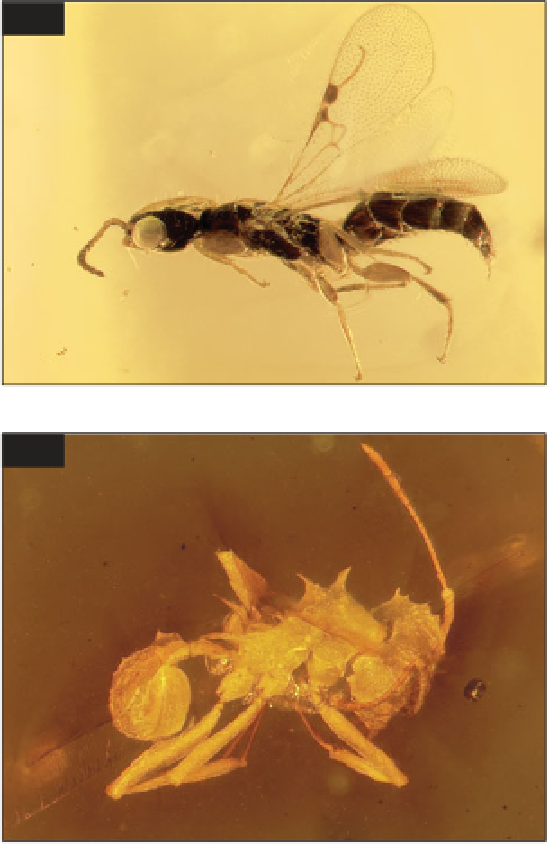Geoscience Reference
In-Depth Information
are found in Dominican amber, from the
tiny trichogrammatid wasps which
parasitize insect eggs, through chalcids,
bethylids (
266
), dryinids, tiphiids,
braconids, ichneumonids, mutillids, and
pompilids. The last are parasitoids of
spiders. Ants are extremely abundant in
Dominican amber because of their habit of
crawling up and down tree trunks, and
around 15 genera have been reported. Just
as in neotropical forests today, they formed
an integral part of the forest ecosystem.
Army ants of the genus
Neivamyrmex
occur
(Wilson, 1985); there are large-headed,
pollen-gathering cephaline ants; ants which
harvest secretions from butterfly larvae,
from aphids, and from scale insects; leaf-
cutter ants such as
Acromyrmex
(
267
),
which grow their own fungus gardens on the
pieces of cut leaf; harvester ants, such as
Pogonomyrmex
, which collect seeds; and
one genus,
Leptomyrmex
, which feeds on
nectar and honeydew, but today occurs only
in tropical Australia and New Guinea.
A great variety of bees and wasps have
been recorded from Dominican amber.
Primitive colletid bees are first represented
in the fossil record in Dominican amber.
266
266 A wasp of the family
Bethylidae, a parasitoid of
lepidopteran and coleopteran
larvae PC. Length about 3.5
mm 0.1 in.
267
267 Leaf-cutter ant
AcromyrmexPC. Length
about 2 mm 0.08 in.




Search WWH ::

Custom Search